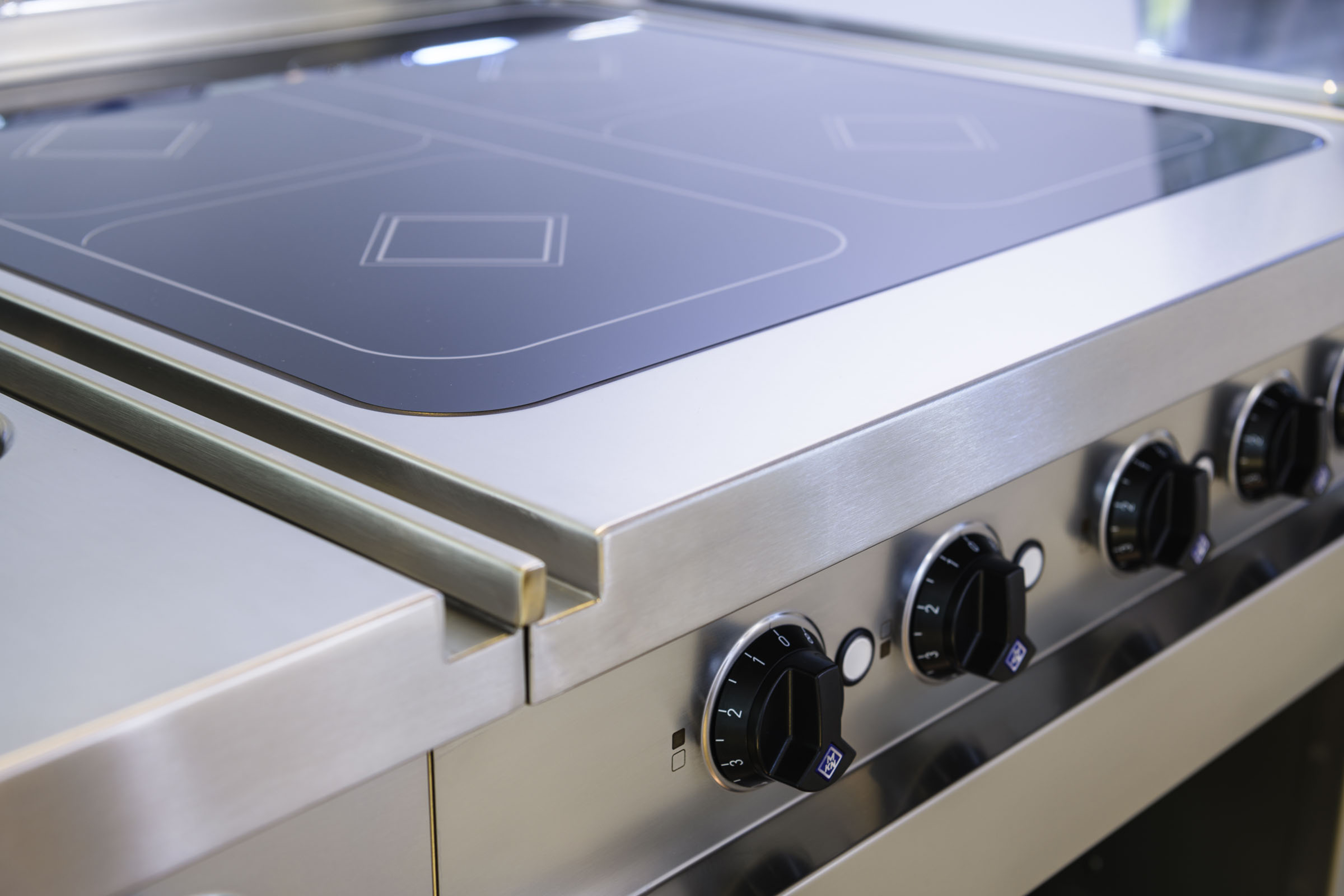Hello, I'm Habil, technical support specialist for MKN customized cooking suites and team blogger.
21.03.2024 Author: Habil Turhan

Induction cooking is an increasingly popular choice in commercial kitchens, giving greater control, quicker heat up times and more efficient cooking than traditional gas or electric stoves.
However, it’s easy to forget that some chefs have never used induction in their life. Switching to a new technology is a learning curve, particularly when you consider that induction cooking requires a different mindset and even different pans to gas hobs.
Let’s take it back to basics with four essentials to consider if you (or your client, for equipment dealer) are switching to induction cooking.
Don’t forget the pans.
Our experience shows that some chefs still aren’t aware that induction cooking requires specific types of pans – those with a flat base, made of ferrous or magnetic metal such as carbon steel, stainless steel or cast iron. Pans with non-magnetic undersides such as copper or aluminium with chrome steel plate inserts won’t work with induction hobs.
This is because induction works through a series of induction coils made from copper wire underneath the hob, which create a magnetic field as electricity is passed through them. If a ferrous pan is placed on the hob, the magnetic field causes it to heat up directly.
Likewise if a non-ferrous pan is used, you won't cause any damage to the hob or pan, but the burner itself won't turn on, so the pan won't heat up.
Be prepared to start cooking.
Cooking with an induction hob is powerful, precise and almost immediate. Cookware will heat much faster than with a gas flame, so we find chefs have to re-educate themselves slightly. It’s only a small change, but make sure your food is prepped before you put the pan on the hob, because you won’t have that heating time for chopping and mixing.
Be mindful of damage.
Any chef will tell you that gas hobs are almost unbreakable – the workhorse of traditional kitchens, associated with the clashing of heavy pans in busy kitchens. Induction hobs are far from fragile, but it’s important to shift mindsets away from old, careless cooking techniques.
Note the bearing capacity of your induction hobs because if you go over the limit with particularly heavy loads, it could cause damage. The advice from manufacturers is to never place objects more than the cooktop bearing capacity on them, to help extend and maintain the cooker’s life. MKN’s induction hobs come with rounded corners to reduce the risk of damage from heavy pans, another enhanced feature for added value.
Not all induction hobs are the same.
Induction cooktops are not a ‘one-size-fits-all’ solution and it’s important to choose the right type of induction for the specific operation. Point induction allows only one pan per heating zone – for single pans it boils faster, due to the higher power density.
Alternatively, surface induction allows chefs to use more than one pan per heating zone, which means different meals can be prepared at the same time, on the same induction cooktop. This flexibility supports a la carte menus in particular, with more even roasting another benefit. Work with your supplier to establish the most appropriate power options too.
MKN’s induction hobs come with the addition of a cassette-based system, located directly under the appliance. This saves space in the kitchen by removing the need for additional storage space and boosts the ease of serviceability. It also means users can place an oven under the induction cooktop, which isn’t possible with many competing products.
One of the most valuable features, however, is that MKN’s technology uses an individual generator for each cooking zone, rather than wiring up to four zones to one generator, which is common elsewhere in the market. In that example, if the generator goes down then the entire cooking functionality is lost. With MKN, only the individual zone is lost.